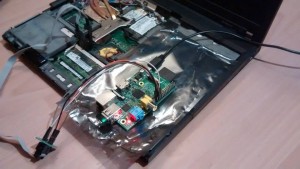This covers commits ef0158ec up to commit 1cbef1c
Development is typically slower during the summer and 2015 is no exception, so the report switches to a biweekly installment for a while.
The last two weeks have seen improvements in our development tools:
coreboot upstream can now build Chrome OS boards with Chrome OS features (verified boot, interaction with Chrome EC, flash based error logging) enabled, and the projects builders at http://qa.coreboot.org/ are now routinely building these configurations alongside the regular default configs for all boards.
The builders now run ‘make what-jenkins does’ (see coreboot/Makefile.inc) instead of a hard-coded set of commands, which provides the community the capability to adapt the test build without admin intervention.
When adding the .config used for building an image into said image, it’s now minimized which gives visibility to the relevant changes to the config compared to the board’s defaults.
Kconfig features a strict mode, which acts as a ‘warnings-as-errors’ equivalent and fails the build if kconfig would emit any warning. Since we still have a couple of those in the tree, it’s not enabled yet.
For users of cscope or ctags, we now have new make targets to create tree-wide indexes (make ctags-project cscope-project).
Reproducible builds got a boost by fixes to the build.h generator script, which can finally emit stable timestamps based on the git revision, instead of the local time.
External payload integration was coalesced within payloads/external, with more work in progress. The integrated SeaBIOS build can now also be used when building with ccache. libpayload gained robustness in different developer environments, being smarter about looking for compilers, configs and include files in all the right places.
On the Free Software side, more microcode blobs were moved to the 3rdparty/blobs repository and one false positive that libreboot’s blob detector tripped over was eliminated, and with a little more progress, it should soon be possible to build from a fully blob-free coreboot tree. Before you get your hopes up, please note that the result may not be very useful on a lot of boards, so more care must be taken.
The effort to make coreboot capable of booting in 64bit mode on x86-64 is still ongoing and saw the integration of more commits.
coreboot should have an easier time again when building on Cygwin and BSD systems.
Skylake was the chipset with the largest amount of work in the 2 weeks, but there was also the addition of a coreboot port for RISC-V’s Spike ISA Simulator, contributions to the AMD Bettong mainboard and its chipset drivers, as well as fixes and cleanups to AMD K8 and Intel i945.
In terms of style, a bunch of extraneous whitespaces, indenting errors and FSF addresses were also dealt with.


